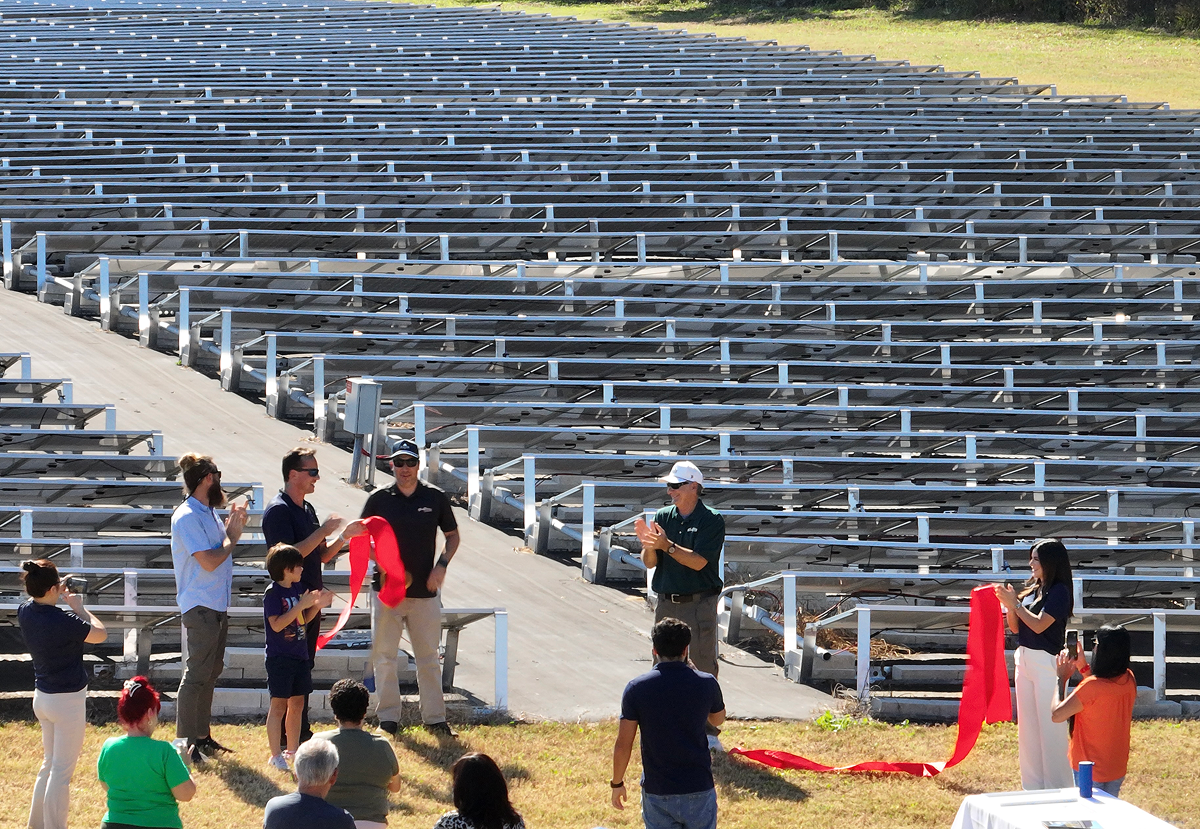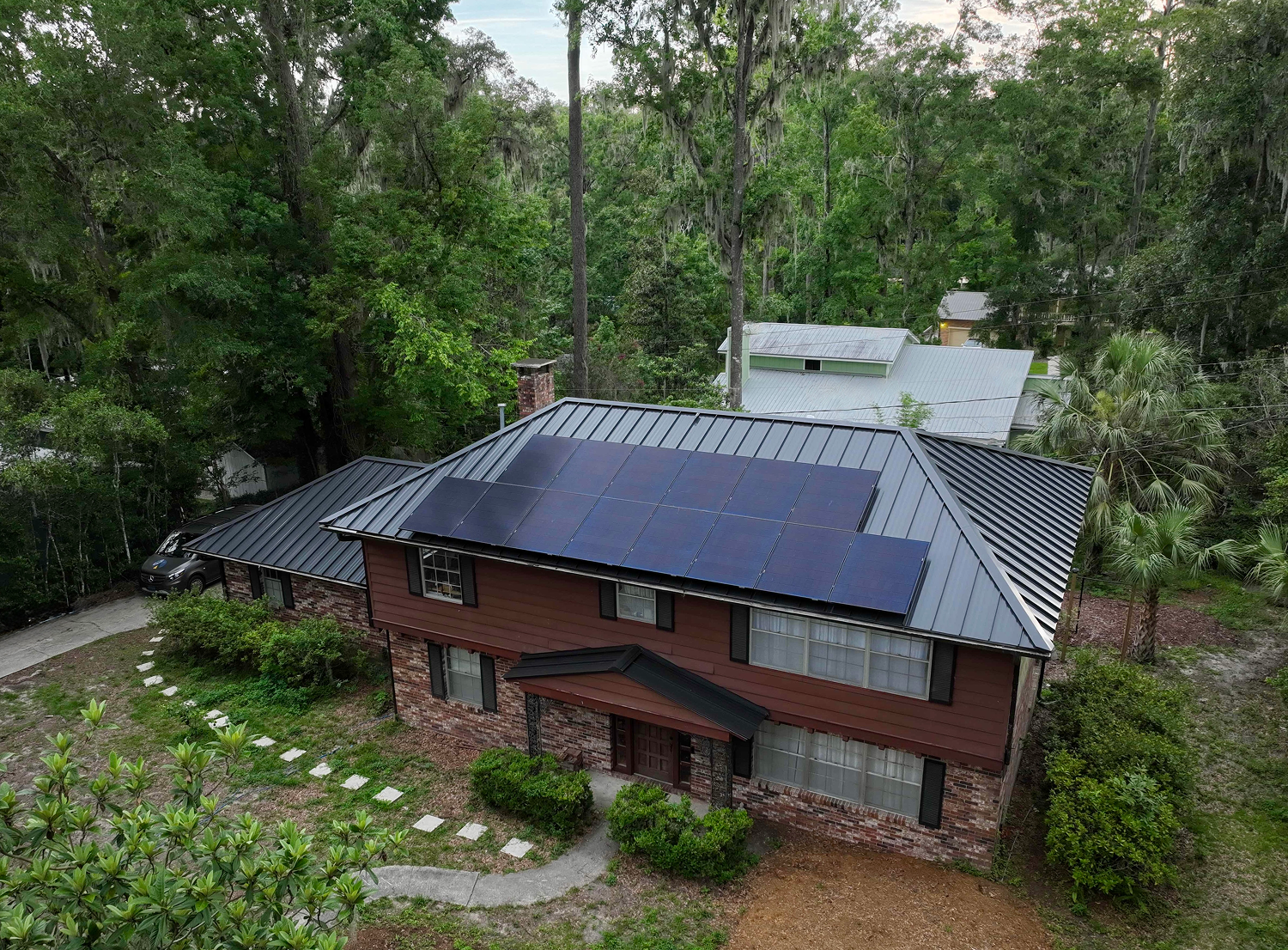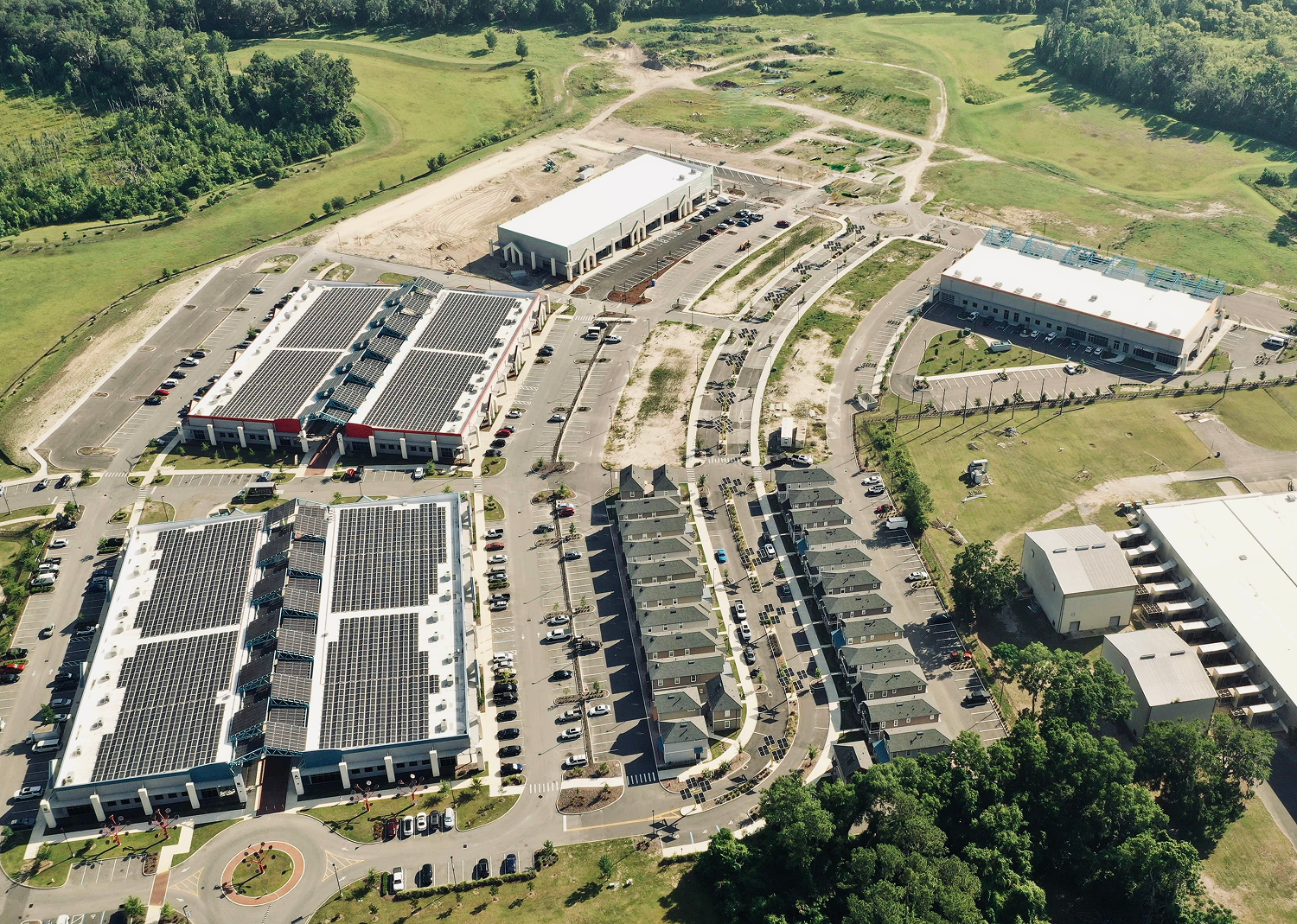The federal solar energy tax credit—formally the Residential Clean Energy Credit for homeowners and the Investment Tax Credit for businesses—lets you slice 30 % off the price of qualifying solar equipment and installation, straight from your federal income tax bill. Picture a $20,000 rooftop system: instead of paying the full amount, you could claim a $6,000 credit at tax time, immediately trimming the project’s net cost to $14,000 before any state or utility incentives kick in.
That single line on your 1040 sparks plenty of questions. How is the credit calculated? Who exactly qualifies? What if your tax liability is smaller than the credit? How do batteries and future add-ons fit in? The guide below answers all of those points and more—covering eligibility rules, step-by-step math, required IRS forms, and smart strategies for stacking the federal break with Florida’s sales-tax exemption and net-metering benefits. By the end, you’ll know precisely how to turn federal policy into real dollars saved on your solar upgrade.
1. Federal Solar Energy Tax Credit Explained
For the IRS, the “solar energy tax credit” goes by two different code sections:
- Residential Clean Energy Credit (IRC §25D) – for homeowners installing solar on a primary or secondary residence.
- Investment Tax Credit (ITC, IRC §48) – for businesses, nonprofits, and developers putting solar on commercial property or large community arrays.
- Home solar systems owned via lease or PPA (third-party owned residential systems) now qualify under Section 48E, not 25D—but only if installation is completed by December 31, 2027. After that, even leased systems lose eligibility.
Under the One Big Beautiful Bill, the 30 % Residential Clean Energy Credit (25D) now expires entirely on December 31, 2025—with zero credit available for systems placed in service on or after January 1, 2026. The prior IRA phase-down schedule is no longer valid.
What the Credit Covers
Eligible expenses are broader than most people expect:
- Solar PV panels and shingles
- Inverters, racking, wiring, and balance-of-system hardware
- Energy storage batteries ≥ 3 kWh still qualify for 25D — but only if the entire system (including storage) is installed and operational by December 31, 2025.
- Sales tax on equipment
- Labor: design, permitting, installation, inspection, interconnection
- Roof upgrades performed solely to support the array (e.g., reinforcement, solar mounting hardware)
The credit will not apply to: general reroofing or cosmetic roof replacements, landscaping, tree removal unrelated to trenching, or leased/third-party-owned equipment.
Brief History and Legislative Timeline
Congress first introduced the residential credit in the 2005 Energy Policy Act at 30 %. Subsequent extensions, most recently the 2022 Inflation Reduction Act, kept the full 30 % alive and added battery storage plus transferability for businesses. The table below shows how the rate has evolved and where it’s headed:
| Year system placed in service | Residential §25D | Commercial §48 |
|---|---|---|
| 2019 | 30 % | 30 % |
| 2020–2021 | 26 % | 26 % |
| 2022–2025 | 30 % | 30 % |
| 2026 | 0 % | 30 % (if safe harboured by June 2026) |
| 2027 | 0 % | 30 % (if finalized by December 2027) |
Understanding these timelines helps homeowners and businesses decide whether to accelerate their project to lock in the maximum federal benefit while it’s still on the books.
2. How the 30 % Savings Works in Real Dollars
A credit is far more powerful than a deduction. While a deduction simply lowers your taxable income, the federal solar energy tax credit (both §25D and §48) slices the amount you owe the IRS dollar-for-dollar. The basic formula is simple:
tax_credit = qualified_system_cost × 0.30
Yet the order in which you apply state rebates, utility incentives, and depreciation (for businesses) affects the final math. The examples below show how the 30 % plays out for homeowners and commercial property owners.
Step-by-Step Calculation for a Typical Home System
Scenario: Gainesville homeowner installs a 7 kW rooftop array.
| Item | Amount |
|---|---|
| Contractor quote | $24,000 |
| Less FL sales-tax exemption | $0 (Florida waives it) |
| Less Duke Energy rebate | – $1,000 |
| Qualified cost for federal credit | $23,000 |
| 30 % Residential Clean Energy Credit | 23,000 × 0.30 = $6,900 |
| Net out-of-pocket cost | $16,100 |
What if my tax bill is smaller than the credit?
Suppose you only owe $3,000 in 2025 taxes. You claim $3,000 this year and carry the remaining $3,900 forward to 2026 (and beyond) until it’s fully used. The credit never turns into a refund.
Estimating Savings for Commercial Projects
Commercial math follows the same 30 % base rate but can grow with Inflation Reduction Act “adders.”
| Example | Amount |
|---|---|
| 250 kW flat-roof array | $300,000 installed cost |
| Base ITC @ 30 % | $90,000 |
| +10 % Domestic-content adder | $30,000 |
| Total potential credit | $120,000 |
Because §48 credits are now transferable, a company without enough tax liability can sell the credit to another taxpayer, converting it to cash at closing.
Bonus Benefits: Depreciation & Performance-Based Incentives
Businesses get another stackable perk: 100% bonus depreciation in year one.
Under the new rules, eligible commercial solar projects can depreciate the entire depreciable basis in the first year instead of spreading it over 5 years with a partial bonus.
Basis reduction rule remains:
Depreciable basis = system cost – 50% of ITC taken.
Using the same $300,000 example with a 30% ITC:
- Step 1 – Calculate ITC:
$300,000 × 30% = $90,000 federal tax credit. - Step 2 – Apply basis reduction:
$300,000 – (0.50 × $90,000) = $255,000 depreciable basis. - Step 3 – Apply 100% bonus depreciation:
$255,000 × 100% = $255,000 first-year depreciation deduction.
Tax benefit from depreciation:
If the business is in a 25% tax bracket → $255,000 × 25% = $63,750 in year-one tax savings from depreciation alone.
Combined year-one federal benefit:
- ITC: $90,000
- MACRS depreciation: $63,750
- Total Year-One Savings: $153,750
That’s over 51% of the system cost recovered in the first year, before factoring in ongoing electricity savings, state/local incentives, or performance-based credits.
These real-world numbers illustrate why locking in the 30 % solar energy tax credit while it’s still available can turbo-charge both residential and commercial payback calculations.
3. Eligibility Rules You Need to Meet
Not every rooftop automatically unlocks the 30 % credit. The IRS ties the solar energy tax credit to four core conditions—ownership, location, tax liability, and documentation. Check the basics first, then dive into the specifics below.
- You buy (not lease) the system
- It’s installed on qualifying U.S. property
- You have a federal income tax liability to offset
- You keep detailed invoices and permits
Ownership vs. Leasing or PPA
The credit follows the owner of the equipment. If you pay cash or use a loan, you’re the owner and can claim 30 %. Sign a lease or power-purchase agreement, and the installer keeps the credit, often baking the value into your monthly payment instead. Switching from lease to ownership later does not revive the credit on that system.
Qualifying Property Types and Equipment
Homeowners may claim §25D on a primary residence, vacation home, condo, or even off-site community-solar share as long as the power is credited to their meter. Rental-only property is excluded from §25D but can use the §48 commercial credit. Panels, inverters, wiring, and batteries ≥ 3 kWh all count; pool heaters, stand-alone generators, and aesthetic roof work do not.
Tax Liability Requirements & Carryover
The credit is non-refundable—it can reduce your federal tax bill to zero, but won’t trigger a refund beyond what you paid in. Any unused portion rolls forward each year, so a household with limited liability can still capture the full value over time.
Situations That Disqualify You
Common pitfalls include double-claiming the same equipment, missing receipts, allocating renewable-energy certificates (RECs) to someone else, or altering the system after claiming the credit without a proper basis adjustment. Keep all contracts, proof of payment, and utility interconnection letters for five years in case the IRS asks.
4. How to Claim the Credit on Your Federal Return
Claiming the solar energy tax credit is straightforward, but a wrong digit or a missing receipt can stall your refund for months. Block out an hour, assemble the paperwork below, and walk through the forms line-by-line—you’ll only have to do it once.
Forms You Need
- Homeowners (§25D): IRS
Form 5695Residential Energy Credits. Complete Lines 1-5 for solar costs, roll the credit toSchedule 3, line 5, then toForm 1040, line 20. - Businesses (§48): Use
Form 3468Investment Credit instead, attaching any prevailing-wage or apprenticeship certification if your array is ≥1 MW. - Keep a photocopy—software and preparers occasionally drop attachments during e-filing.
Gathering Documentation and Receipts
The IRS rarely asks for proof up front, but you must be audit-ready:
- Signed, itemized contractor invoice (equipment, labor, permitting)
- Proof of payment (canceled checks, credit-card statement, ACH confirmation)
- Utility interconnection or permission-to-operate letter
- Battery spec sheet showing ≥ 3 kWh capacity
Store these with your tax records for at least five years.
Claiming the Credit When Financing Your System
Solar loans are fine—the credit is based on the full contract price, not what you paid down in year one. If you wrapped solar into a home-equity loan, only the interest (reported on Form 1098) affects deductions; the 30 % credit remains unchanged.
Carrying Forward Unused Credit
Form 5695 Part II handles carryovers. Example:
| Year | Credit Available | Tax Owed | Credit Used | Carry-Forward |
|---|---|---|---|---|
| 2025 | $6,900 | $3,000 | $3,000 | $3,900 |
| 2026 | $3,900 | $4,500 | $3,900 | $0 |
Enter last year’s carry-forward on Line 16; the software will net it out automatically. Repeat until the credit is exhausted or the program sunsets.
File on time, double-check numbers, and you’ll see your solar savings show up the very next April.
5. Stacking the Federal Credit with Other Incentives
The 30 % solar energy tax credit is the big-ticket item, but it rarely lives alone. State rebates, utility programs, and sales-tax breaks can shave thousands more off your out-of-pocket cost—if you apply them in the right order. The rules below keep every dollar on the table.
Order of Operations: Applying Multiple Incentives
- Subtract cash rebates (state, utility, or city) from the contract price first.
- Multiply the remaining balance by
0.30to calculate the federal credit. - Leave performance-based incentives (SRECs, net-metering bill credits) out of the equation; they’re considered income, not cost offsets.
- For businesses, apply the ITC before figuring the depreciable basis.
Florida-Specific Programs and Net Metering
- 6 % sales-tax exemption on solar hardware—already baked into your installer’s quote.
- Property-tax exclusion on the added home value from PV.
- Investor-owned utility net metering (FPL, Duke, TECO) credits excess kWh at the retail rate, resetting each billing cycle.
Impact on Payback Period and ROI
| Scenario (7 kW) | Net Cost | Simple Payback* |
|---|---|---|
| No incentives | $24,000 | 13 yrs |
| Federal credit only | $16,800 | 9 yrs |
| Fed credit + $1,000 rebate | $15,800 | 8 yrs |
*Assumes $1,300 annual utility savings, 3 % yearly rate inflation, and no battery. Adding a Powerwall lengthens payback but boosts backup resilience—often worth the trade-off in storm-prone Florida.
6. Business Benefits and Extra Incentives for Commercial Installations
Homeowners aren’t the only ones cashing in; commercial property owners, farms, nonprofits, and municipal utilities can now unlock larger, more flexible federal incentives. Section 48 of the tax code gives businesses the same 30 % baseline credit, layers on location- and content-based adders, and lets organizations with little or no tax appetite monetize it through transfer or direct pay. Stack that with accelerated depreciation, and the first-year savings can top 50 % of the project cost.
Section 48 ITC vs. Section 25D Credit
Section 48 applies to income-producing property: offices, warehouses, solar farms, and even parking-lot canopies. It is transferable, may deliver “direct pay” to tax-exempt entities, and offers 10–20 % bonus rates for meeting domestic-content or energy-community criteria—unavailable under homeowner §25D.
Community Solar and Third-Party Ownership Options
Companies lacking rooftop space can invest in off-site community solar or host a third-party-owned array and still capture value. The developer claims the credit, then passes savings through via discounted power purchase rates or a leaseback structure.
7. Quick-Answer FAQ Most Homeowners Ask
What if I don’t owe enough taxes this year?
The credit is non-refundable, but any unused portion rolls forward indefinitely. You can chip away at your tax bill year after year until the full 30 % is used.
Can I claim batteries and EV chargers?
Yes—stand-alone or paired batteries rated 3 kWh or larger qualify for the same 30 % credit. EV chargers fall under a separate §30C credit worth up to 30 % (capped at $1,000 for homes).
Does the credit cover roof repairs or re-roofing?
Only work directly required to support the solar array (e.g., structural reinforcement, solar shingles) is eligible. General reroofing, fascia fixes, or cosmetic upgrades are excluded.
How does the IRS verify my claim?
Random audits. Keep contracts, proof of payment, photos of the installed equipment, and your utility’s permission-to-operate letter for at least five years—enough to satisfy any documentation request.
Moving Forward with Solar Savings
The 30 % residential solar tax credit (Section 25D) expires completely on December 31, 2025, with no phase‑down. After that, homeowners are ineligible for this federal incentive—even if systems are completed in early 2026. For commercial systems (Section 48E), you must begin construction by July 4, 2026 (safe harbor), or your system must be placed in service by December 31, 2027, to qualify. After that, no credit applies.
Claiming it can cut thousands off your solar project, and it stacks neatly with Florida’s sales-tax exemption, net-metering, and any cash rebates still on the table. The paperwork is straightforward—one IRS form, a few invoices, and you’re done—yet the impact on your payback period is huge.
If locking in low energy bills, backup power, and a smaller carbon footprint sounds good, now’s the moment to act while the full credit is guaranteed. Reach out to the team at PPM Solar for a free, no-obligation quote customized to your roof, budget, and timeline. Your future self (and your utility bill) will thank you.



